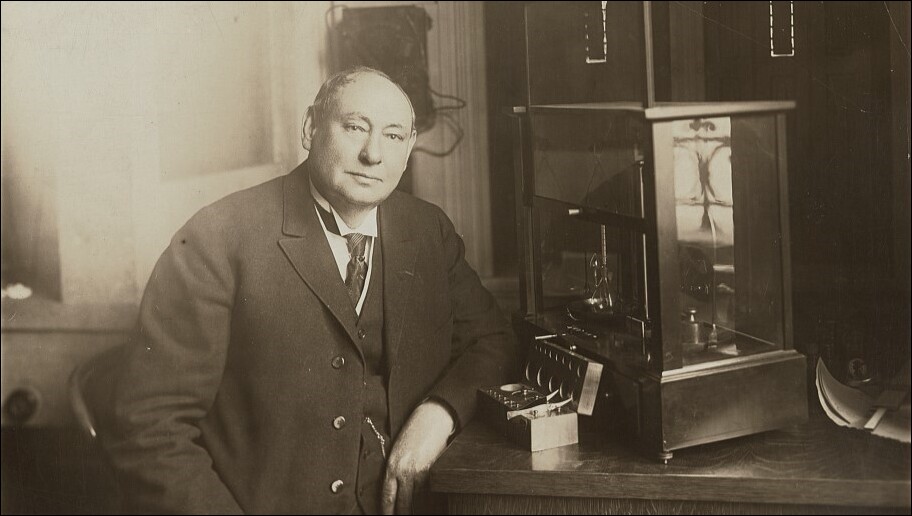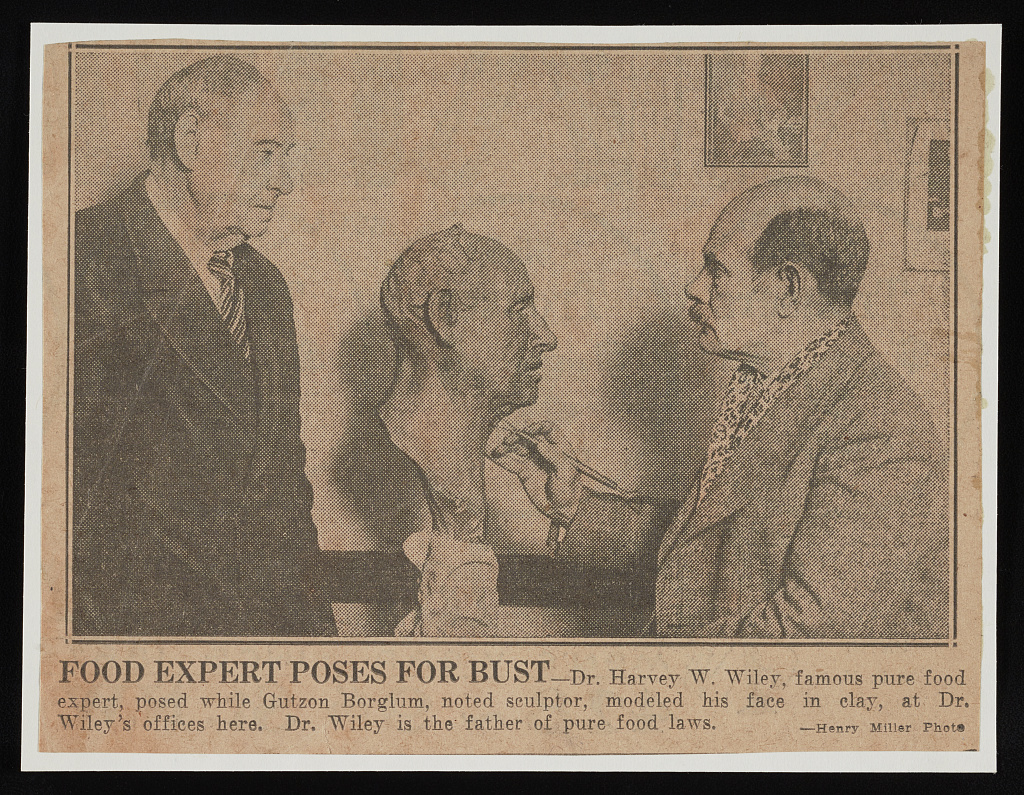
The Bureau of Chemistry at the USDA, photograph, 1890. Wiley is the tall individual, third from the right.
In Harvey W. Wiley: An Autobiography, 1930. Linda Hall Library.
HARVEY W. WILEY
Harvey Washington Wiley (Oct. 8, 1844 - June 30, 1930), was an American chemist. As a chemist, he had become interested in food. Wiley desired to dissect the food bought in supermarkets to analyze their exact ingredients.
He was hired by the U.S. Department of Agriculture in 1883, consequent to his discovery of corn syrup in honey and maple syrup. Wiley was employed as a "head up" of their new Bureau of Chemistry.

Harvey Washington Wiley fought to strengthen food-safety policies.
Library of Congress.








